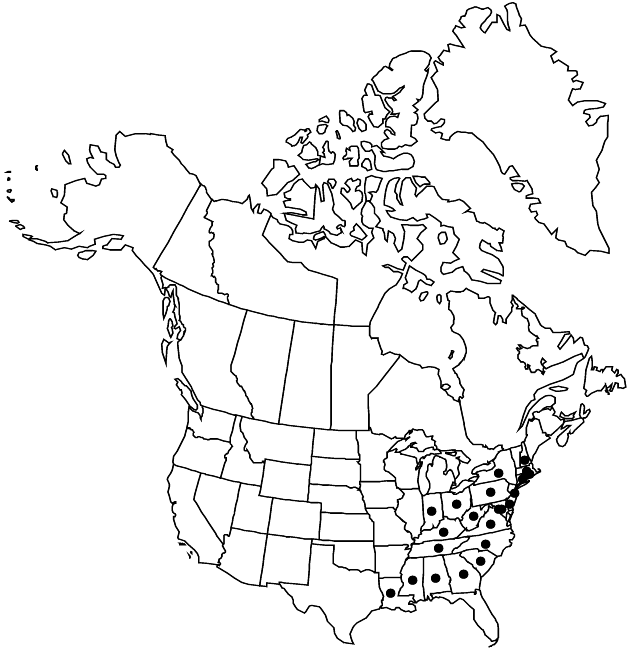Difference between revisions of "Sericocarpus linifolius"
Prelim. Cat., 26. 1888. not Britton 1888
imported>Volume Importer |
imported>Volume Importer |
||
| Line 6: | Line 6: | ||
|place=26. 1888 | |place=26. 1888 | ||
|year=1888 | |year=1888 | ||
| + | |other_info_on_pub=not Britton 1888 | ||
}} | }} | ||
|common_names=Narrow-leaf white-topped aster | |common_names=Narrow-leaf white-topped aster | ||
| Line 64: | Line 65: | ||
|publication year=1888 | |publication year=1888 | ||
|special status=Endemic | |special status=Endemic | ||
| − | |source xml=https:// | + | |source xml=https://bitbucket.org/aafc-mbb/fna-data-curation/src/2e0870ddd59836b60bcf96646a41e87ea5a5943a/coarse_grained_fna_xml/V19-20-21/V20_199.xml |
|tribe=Asteraceae tribe Astereae | |tribe=Asteraceae tribe Astereae | ||
|genus=Sericocarpus | |genus=Sericocarpus | ||
Latest revision as of 20:01, 5 November 2020
Plants 22–75 cm. Stems erect (stout, branched), glabrate. Leaves: basal and proximalmost cauline withering by flowering; cauline sessile; blades linear, 10–80 × 1–10 mm, margins entire, apices acuminate, faces glabrate. Heads 2–4 per branch, in broadly corymbiform arrays. Peduncle bracts broadly lanceolate to narrowly ovate, glabrate. Involucres 4–6 mm. Phyllaries in 3–4 series, outer 2–4 mm, mid 3–4 mm, glabrate. Ray florets 2–6; tubes 2–4 mm, laminae 4–11 mm. Disc florets 5–15; corollas 2–4 mm, lobes 1–2 mm. Ovaries obconic, 0.8–1.3 mm, densely strigose; pappi: inner series 3–6 mm. 2n = 18.
Phenology: Flowering mid summer–early fall.
Habitat: Dry to moist sandy, clay, and gravelly soils of open deciduous and pine woods, oak and pine barrens, roadsides, fields
Elevation: 0–900 m
Distribution

Ala., Conn., Del., D.C., Ga., Ind., Ky., La., Md., Mass., Miss., N.H., N.J., N.Y., N.C., Ohio, Pa., R.I., S.C., Tenn., Va., W.Va.
Discussion
Selected References
None.